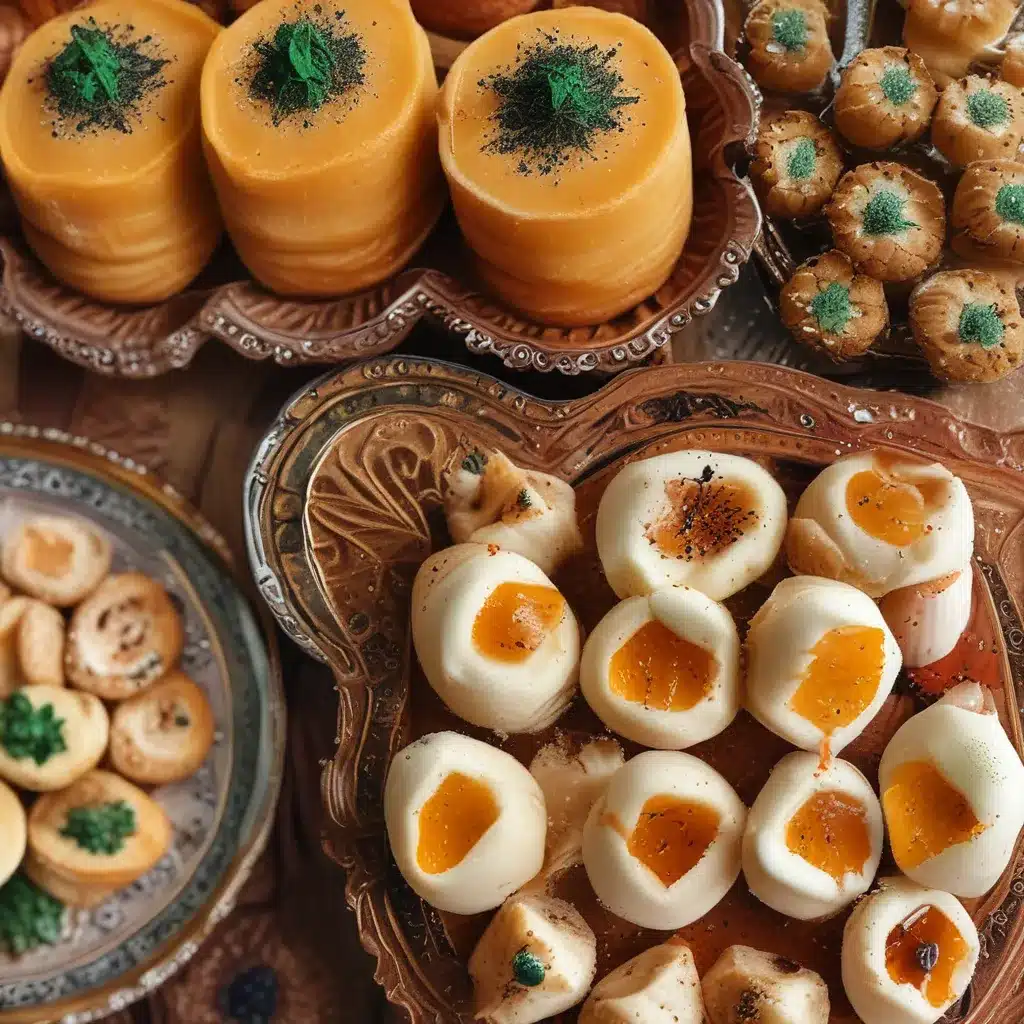
Uncovering the Delightful Diversity of Moroccan Sweets
As I stroll down the bustling streets of New York City, the aroma of spices and the sights of vibrant colors beckon me to explore the rich culinary heritage of Morocco. But today, I’m on a mission to uncover the tantalizing world of Moroccan desserts that often live in the shadow of the beloved baklava.
You see, there’s so much more to Moroccan sweets than the flaky, honey-drenched pastry that has captured the hearts (and tastebuds) of people worldwide. In fact, the Moroccan dessert scene is a veritable treasure trove of flavors, textures, and traditions that deserve to be celebrated in their own right.
Unforgettable Flavors: Exploring the Moroccan Dessert Landscape
Let’s start our journey with the captivating Moroccan delicacy known as M’hanncha, or the “snake pastry.” This intricate creation is a spiral of paper-thin phyllo dough, stuffed with a decadent almond filling and drizzled with fragrant orange blossom water. As I take my first bite, the delicate layers melt in my mouth, releasing a symphony of nutty, floral, and buttery notes that dance on my tongue.
But the Moroccan dessert world doesn’t stop there. Have you ever heard of Chebakia? These delightful flower-shaped pastries are first deep-fried to a golden crisp, then soaked in a sticky-sweet honey syrup infused with the warm spices of cinnamon, anise, and sesame. The result is a chewy, crunchy, and utterly addictive treat that will have you reaching for more, despite your best efforts to practice self-control.
And let’s not forget the iconic Rghaif, a flaky, paper-thin Moroccan flatbread that is typically served with honey, butter, and sometimes even sprinkled with cinnamon sugar. It’s a simple yet sublime experience, where the light and airy texture of the pastry perfectly complements the sweetness of the toppings.
Embracing the Art of Presentation: Moroccan Desserts as Edible Masterpieces
Moroccan desserts aren’t just about flavor; they’re also a feast for the eyes. Take, for instance, the mesmerizing Beghrira, a semolina-based treat that is shaped into intricate, ornate patterns and then deep-fried to a crisp. The result is a delicate, lace-like pastry that is often dusted with powdered sugar, creating a stunning visual contrast that is guaranteed to impress your dinner guests.
But the true showstopper in the Moroccan dessert world has to be the captivating Bisteeya, also known as the Moroccan meat pie. This savory-sweet masterpiece features a buttery, flaky crust that envelops a filling of spiced, shredded chicken or pigeon, along with a decadent blend of eggs, almonds, and aromatic spices. It’s a culinary work of art that commands attention and leaves a lasting impression on all who indulge.
Exploring the Cultural Roots of Moroccan Sweets
Moroccan desserts are not merely delicious confections; they are also rich in cultural significance and historical traditions. For instance, the Kaab el Ghazal, or “gazelle’s horns,” are named after the graceful horns of the beloved Moroccan antelope. These crescent-shaped pastries are filled with almond paste and coated in a sweet, floral-scented syrup, creating a delightful juxtaposition of textures and flavors.
But the cultural heritage of Moroccan sweets extends far beyond the names and shapes of the desserts. Many of these treats are deeply rooted in the country’s Berber, Arab, and Mediterranean influences, with each region and community contributing their own unique twist and culinary traditions. It’s a fascinating tapestry of flavors and stories, waiting to be unraveled and savored by adventurous dessert enthusiasts.
Moroccan Desserts: A Sensory Delight Beyond Baklava
As I savor the last bite of my Beghrira and sip on a fragrant mint tea, I can’t help but marvel at the sheer diversity and richness of the Moroccan dessert landscape. While baklava may be the most well-known Moroccan sweet, it’s merely the tip of the iceberg when it comes to the tantalizing world of Moroccan confections.
From the delicate, floral-infused M’hanncha to the crunchy, honey-drenched Chebakia, each Moroccan dessert offers a unique sensory experience that transports me to the vibrant markets and bustling streets of this captivating North African country. And as I continue to explore and discover the hidden gems of Moroccan sweets, I’m confident that my taste buds will continue to be delighted and my culinary curiosity will remain insatiable.
So, the next time you’re craving a sweet treat that goes beyond the familiar flavors of baklava, I encourage you to venture into the enchanting world of Moroccan desserts. Trust me, your palate will thank you.


